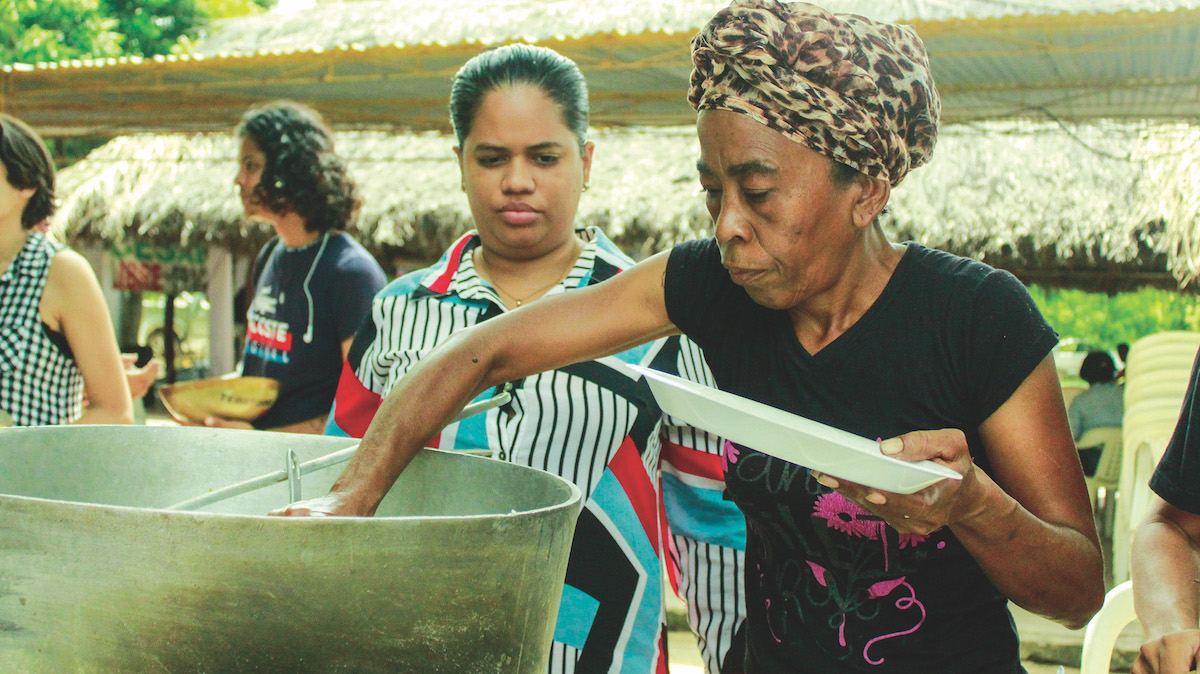Collaborating with Communities, Catalyzing Movements

The water was rising: On the western coast of Bangladesh in the early 2000s, communities deep in the Sundarbans mangrove forest began tasting salt in their drinking water and watching their fields flood and crops choke and die. It was a crisis coming to coasts around the globe: the steady creep of sea level rise.
In the Global North, the crisis didn’t go unnoticed. Year after year, major investors were pouring millions of dollars into the construction of seawalls around the villages. And year after year, as storm surges increased, those seawalls were crumbling.
But locals knew that their villages once had a natural defense: the mangroves. This once-dense barrier, diminished by decades of logging and development, had shielded their communities from the sea for generations. In the early 2010s, one group of women began their own movement to restore it – mobilizing their community to plant and protect the trees. As the forest came back, slowly but surely, it began to slow the flooding.
“It’s an example of how top-down approaches fail to closely observe what’s happening,” says Laura García, president and CEO of Global Greengrants Fund. “These communities live there, experience the problem, and understand why those multimillion-dollar initiatives do not work.”
Today, Sundarbans reforestation is one of thousands of projects supported by Global Greengrants Fund, which connects philanthropic dollars to grassroots organizations fighting for human rights and environmental justice around the world.
Before 1993, when Global Greengrants Fund was founded, there would have been virtually no way for philanthropy in the Global North to find, let alone support, the communities in the Sundarbans. Paradoxically, the highest-impact, lowest-investment work seemed the most difficult to support.
“There’s a huge gap between resources needed by hundreds of thousands of small-scale organizations and the large amounts of funding sitting in the Global North given through traditional large-scale investments,” García says.
Global Greengrants Fund works to close this gap. Their “people and planet” approach acknowledges that those living on and caring for the land are best equipped to identify and create ways to protect it.
Across Africa, the Arctic, Asia, Latin America, the Middle East, and the Pacific Islands, they are supporting more than 1,300 grassroots environmental organizations annually in areas from youth, disability rights to gender justice, organizations that would likely previously never have otherwise found support.
“Global Greengrants Fund was born out of the great opportunity to democratize the funding from the philanthropic sector to be able to advance environmental justice globally,” García says.
Grassroots Movements Take the Lead
How does a global fund find organizations that are, by definition, hyperlocal and movement-based? By working from the grassroots up. For three decades, Global Greengrants Fund has steadily grown their network of more than 215 advisors who are deeply connected to local communities and environmental justice causes around the world. Advisors bring their nominations to one of 30 regional or thematic advisory boards that connect these groups to the funding.
“The decentralized grantmaking decision system is unique in the philanthropic space,” García says. “It’s about participation and treating grantees as true partners.”
Another core aspect of these grants is their flexibility. By leaving the terms of the agreement more open ended, Global Greengrants Fund puts trust in the community to confront and be flexible to new challenges as they arise.
Flexible funding also allows for unconventional approaches. As an example, Global Greengrants Fund’s Latin American advisory board recently observed a pivot taken by a group of Indigenous women grantees organizing their communities to oppose mine approvals. During the pandemic, as a food security crisis emerged, these women began using their funds to set up community kitchens. After the worst of the pandemic was over, they had built up so much credibility in their communities that they saw a surge in meeting attendance and newfound support from initially skeptical male leaders.
Funding a Gender-Just Future
Building a new philanthropy model requires confronting both new and age-old systemic challenges like gender injustice. Global Greengrants Fund recognizes that climate change disproportionately affects women, who receive only a minuscule fraction of climate investment. Since 2014, they’ve rapidly increased their grantmaking to projects that address the gendered effects of climate change. Today they are one of the world’s top public foundations supporting gender-just environmental initiatives, which comprise over 50% of their grants. “We need to take a transformative approach,” García says. “To tap into the feminist theories of economic sustainability and equality that are countering the systems of oppression that generated the climate crisis in the first place.”
Global Greengrants Fund was built for this work. To find those in need who are working towards a new vision for their world and connect them directly with those who can support it. They are extending their advisory board grantmaking model to underfunded areas like Central Asia, and launching thematic boards for Indigenous Peoples’ rights, plastics, and zero waste among others. But at the center of all of their work is gender.
García says, “We cannot really expect to tap into that magic of imagining equality and justice if we don’t fund those who have been fighting for it for a very long time: women.”
Global Greengrants Fund
Donate now!www.greengrants.org
Vice President of External Relations: Kézha Hatier-Riess
Mission
Global Greengrants Fund mobilizes resources for communities worldwide to protect our shared planet and work toward a more equitable world.
Begin to Build a Relationship
We know you care about where your money goes and how it is used. Connect with this organization’s leadership in order to begin to build this important relationship. Your email will be sent directly to this organization’s director of development and/or Executive Director.